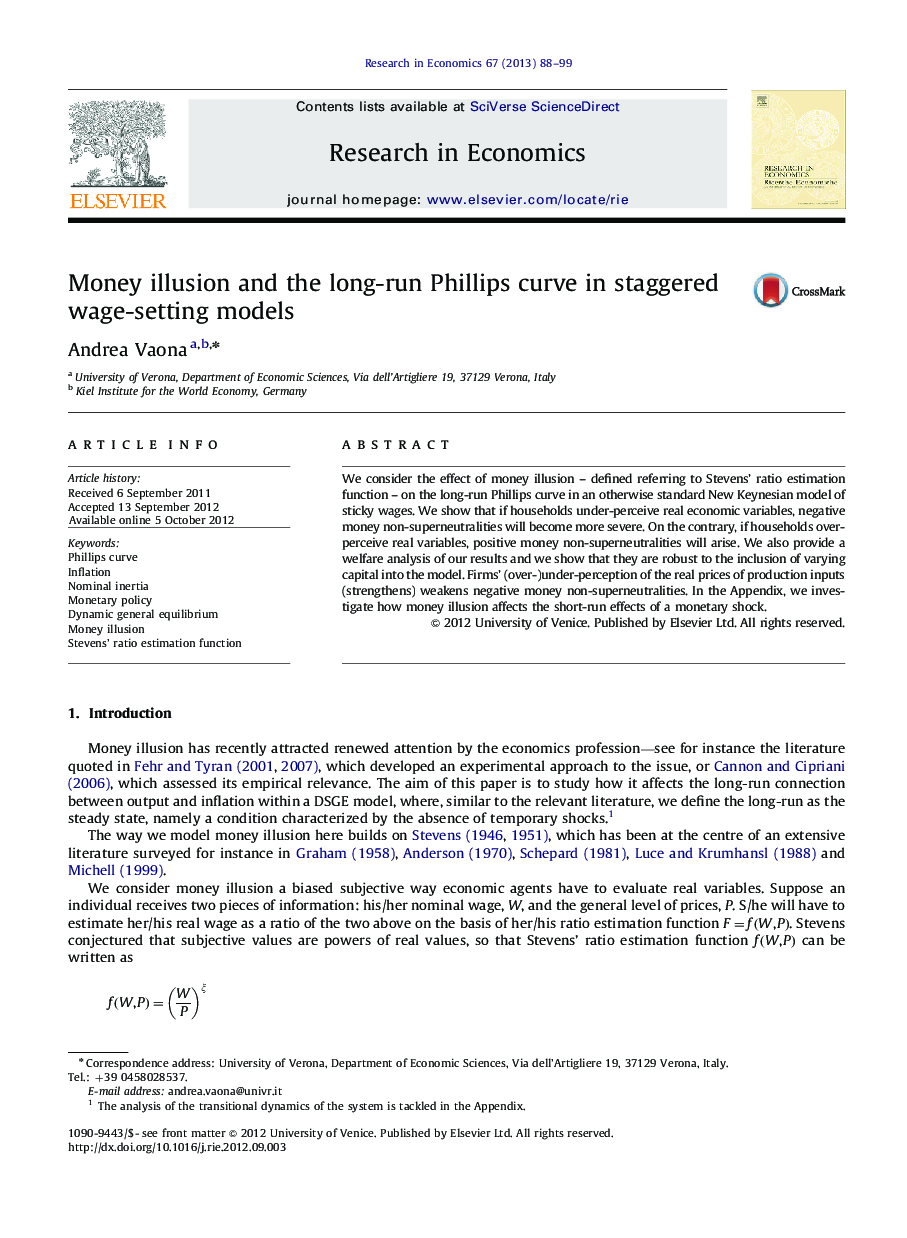| Article ID | Journal | Published Year | Pages | File Type |
|---|---|---|---|---|
| 983531 | Research in Economics | 2013 | 12 Pages |
We consider the effect of money illusion – defined referring to Stevens' ratio estimation function – on the long-run Phillips curve in an otherwise standard New Keynesian model of sticky wages. We show that if households under-perceive real economic variables, negative money non-superneutralities will become more severe. On the contrary, if households over-perceive real variables, positive money non-superneutralities will arise. We also provide a welfare analysis of our results and we show that they are robust to the inclusion of varying capital into the model. Firms' (over-)under-perception of the real prices of production inputs (strengthens) weakens negative money non-superneutralities. In the Appendix, we investigate how money illusion affects the short-run effects of a monetary shock.
► Money illusion is defined referring to Stevens' ratio estimation function. ► We focus on the long-run Phillips curve in a New Keynesian model of sticky wages. ► Under-perception of real variables strengthens money non-superneutralities. ► Over-perception of real variables produces positive money non-superneutralities. ► Welfare and short-run analyses are also provided.
